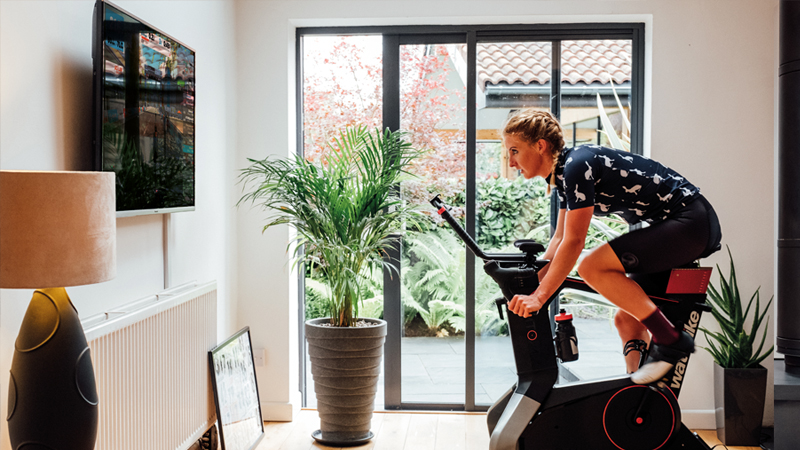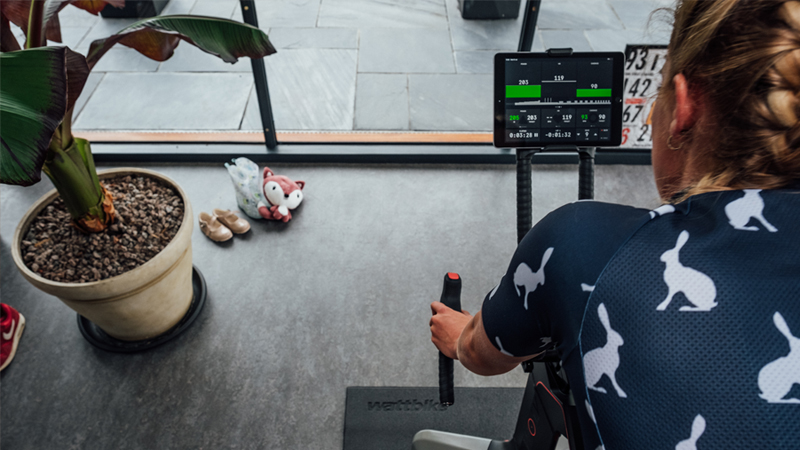Sportive training: 10 training tips
Whether you’re preparing for your very first sportive, or you’re an experienced sportive rider, here are 10 training tips to help you nail your next

While sportive training mightn't be the obvious priority during the current climate, now could just be the perfect time to prepare your bucket list of sportive events and start focussing on your sportive training.
A typical sportive will often include a long and arduous day in the saddle. Most will take place over a single day, but some are multi-day stage-events. It's almost a given to tackle above-average elevation gain and mileage that far-exceeds an average ride. Sportive training, therefore, needs to prepare your body for the stresses of your chosen event.
Coronavirus and the subsequent measures of social distancing and lockdown mean riders might not be able to get outdoors for optimal training, but fortunately, the advancements of indoor cycling apps and turbo trainer hardware means riders are able to get the same level of training stimulus without leaving their living room.
Indoor cycling was once a mixture of unspeakable pain and anti-social behaviour. Even the best turbo trainers were noisy and suffered from horribly artificial pedalling interfaces - think pedalling through treacle. They were seen as an absolute last resort within any training programme until indoor training went through something of a revolution.
Today’s indoor trainers are splendidly sophisticated and make logging your training miles a rewarding experience. There is also less burden of servicing with the lower exposure to the elements. Indoor trainers allow you the opportunity for brutal training mileages and intensity without the costly component wear that an equivalent outdoor effort would tally on your road bike.
Here are 10 indoor-focused training tips on how to get ready for your big event.
1. Invest in a good setup
Sportive training, like any other, requires lots of quality saddle time. You'll need to fit this time in around everyday life such as work and family. Indoor training can help to guarantee the quality of a workout without junk miles, traffic and poor weather.
The latest race content, interviews, features, reviews and expert buying guides, direct to your inbox!
You're likely to be spending a lot of time on your trainer, so it's important to invest in a good quality setup. Most turbo trainers will give you at the very least an estimated power output, while more advanced smart bikes like the Wattbike Atom give highly-accurate measures, ensuring you can track your training perfectly.
Our guide to the cheapest Zwift setup will explain everything you need to get into indoor training and help you find an affordable setup.
2. Get yourself comfortable
If you’re planning on riding indoors a lot, it’s best to get your bike set up correctly. With a huge amount of adjustability on more premium indoor bikes, you can even use your time indoors to experiment with your position and fuelling strategy to maximise your performance.
3. Assess your fitness levels
There are a large number of great training programs available on Zwift, Wattbike Hub, or TrainerRoad. To get the most from these plans, you could begin by performing some tests such as a ramp test or a 20-minute FTP test. Not only will your test results inform your training, but you can also repeat the test every few weeks to help you track your progress.
- The benefits of training indoors for an event
- How to race on Zwift - top tips and setup advice
- How to train to win a Zwift race

4. Plan ahead and get into a routine
Training consistently is better than doing 1 or 2 huge rides each week, but fitting your sportive training into everyday life can be difficult and requires some planning. Take a look at your schedule a few weeks ahead and decide where you can fit in your training whilst minimising the risk of you missing sessions. Remember to be flexible though; there are days where you won’t be able to complete the 4-hour epic you’d planned but don’t fret. If you’re running short on time, even a 30-minute session can be beneficial.
5. Build a good base fitness
One of the biggest attractions of a sportive is the physical and mental challenge of cycling large distances. This requires a good level of base fitness, and long steady rides are key to this. Try progressing the duration of these rides over time to get your body used to the strain you’ll be putting it under during your sportive. Although efforts at and above threshold are where you can make up some time on the climbs, all your recovery from these efforts will be aerobic, so it’s doubly important to maximise your body’s aerobic capacity with long rides.
Zwift: Everything you need to know
Best turbo trainers
The best Zwift setups
Cheapest Zwift setup
Indoor cycling
6. Long group rides on Zwift
Hours on the turbo used to be daunting, but the old days of sitting on rollers or a basic turbo trainer for hours on end are long gone. One of the more enjoyable ways to cover the distance indoors can be to join one of the regular 100 km audax rides on Zwift. There should be a category to suit every level of cyclist, and the social aspect of the ride will help the hours fly by.
7. Split big days
If your training plan requires you to do 4 hours on the bike at the weekend, but non-cycling activities are going to get in the way, try splitting it up. By doing two rides, one in the morning and one in the evening, you’ll still get the same volume of cycling completed, and you don’t have to neglect your work or family life. Recent research has shown that splitting rides between the morning and afternoon, whilst carefully controlling carbohydrate intake between rides, can even increase how much we adapt to training.

8. Climb, climb, and climb some more
Many sportives will challenge your ability to climb for long periods of time, so you should hone your ability to climb at low cadences and out of the saddle. It can be hard to find long climbs in the UK to train on, so why not try Alpe Du Zwift? With over 1000m of climbing, mimicking the iconic Alpe D’Huez, there can surely be no better way of preparing yourself for the climbs you’ll encounter in your sportive.
9. Bring on the intervals
Your sportive is unlikely to be a steady ride, instead, people will surge on climbs or you'll want to bridge across a gap to a group ahead of you and recover quickly enough to hold your position. To do this you will want to start integrating some interval sessions into your training. The use of an erg mode on smart turbo trainers or smart bikes is perfect to ensure you hit your target watts during your intervals without having to think too much about it. Just keep your head down, and keep your legs spinning!
10. Progress your training
As you get fitter, you’ll find your normal rides and intervals easier, and for good reason. You aren’t putting your body under as much stress, and you need that very stress to force your body to adapt to the training you're doing. To overcome this, you should gradually increase the length of your long rides and the intensity of your intervals. If training with power, frequently assess your fitness to reset your training zones and continually increase your effort for the same session, or try adding 30 minutes to your long rides to build your endurance base. By constantly, but gradually, increasing your training load, you can make some huge gains.
